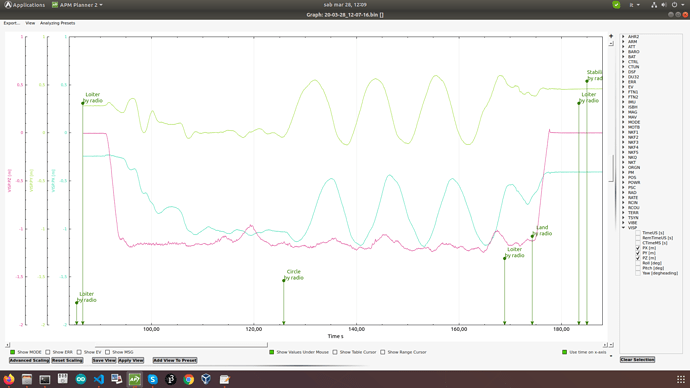MAVCONN library (libmavconn) is the mavlink connection and communication library used in MAVROS that could be used also outside the ROS environment.
I used it in two project related to non-GPS Navigation systems based on Visual Position Estimation and I would like to share with Ardupilot community my experience.
The first project (aruco_mavconn) is the porting to (non-ROS) C/C++ of the positioning system based on Aruco Boards described in this wiki page (Indoor autonomous flight with ArduCopter, ROS and Aruco Boards Detection — Dev documentation).
The intent was that of learning how to use libmavconn and a little bit more of OpenCV while at the same time obtaining a lighter application to run on Single Board Computer.
The second project (t265_mavconn) is the porting to C/C++ of the Python script written by Thien Nguyen (@LuckyBird) to send VISION_POSITION_ESTIMATE messages from the T265 VIO device to Flight Controller after transforming the reference frame to NED. The work done by Thien Nguyen is documented in this wiki page (Intel RealSense T265 — Copter documentation).
Other then porting to (non-ROS) C/C++ this two systems I added the possibility to choose between two way of sending the Visual Position Estimation messages:
- using EKF2 + sending VISION_POSITION_ESTIMATE message;
- using EKF3 + sending GPS_INPUT message.
The use of GPS_INPUT message permit us to send information about velocity other then position and attitude. In adding this feature I used as reference the Vicon MAVProxy module written by @Tridge for the Vicon Indoor Positioning System documented here. From this module I used the part relative to time and coordinate transformation (from local NED to GPS).
Both projects has been tested on Copters with Raspberry Pi 3 (with Ubuntu 16.04) used as Companion Computer. aruco_mavconn has been tested also on a desktop PC with Ubuntu 18.04 using a small (3 inch) Copter with Raspberry Pi Zero W connected in WiFi to The PC. The configuration relevant to this last system is explained in this post Indoor autonomous flight with Arducopter, ROS and Aruco Boards Detection.
For the connection of the Companion Computer to Flight Controller and relative settings see relevant information on the wiki pages:
-
Intel RealSense T265 to use T265 VIO Camera with t265_mavconn;
-
ROS with Aruco Boards detection to use Aruco Boards with aruco_mavconn.
I have to say that I am not so good at C++ object oriented programming, so the programs consist mainly of one source file with all functions and logic in there. I hope to find the time to refactor the sources in a better form.
aruco_mavconn
aruco_mavconn depends on OpenCV and MAVCONN.
To build OpenCV form source follow the instruction at:
https://docs.opencv.org/master/d7/d9f/tutorial_linux_install.html
To build MAVCONN follow the instruction in the relative paragraph of this post.
After installing the prerequisites it is possible to built the project in this way:
$ git clone https://github.com/anbello/aruco_mavconn
$ cd aruco_mavconn
$ mkdir build
$ cd build
$ cmake ..
$ make
$ cp ../data/* .
To start the program:
$ detect_board_mavconn –lp=../data/launch.yml
Here an example of launch file (lines beginning with ‘#’ are ignored):
%YAML:1.0
dictionary: 16
camera_param: "calib-raspicam2.3.yml"
#video_pipeline: "udpsrc port=9000 ! application/x-rtp,media=video,clock-rate=90000,encoding-name=JPEG,a-framerate=30,payload=26 ! rtpjpegdepay ! decodebin ! videoconvert ! appsink"
video_pipeline: ""
camera_id: 0
offset_x: 0.0
offset_y: 0.05
offset_z: 0.0
board_layout: "layout-my.yml"
detector_param: "detector_params.yml"
refined_strategy: 0
show_rejected: 0
mavconn_url: "tcp://192.168.10.16:2000"
#mavconn_url: "/dev/ttyACM0:115200"
vision_gps_msg: 2 # 0 -> no msg | 1 -> vision msg | 2 -> gps msg
pose_msg_rate: 15
show_image: 1
Video source can come from a gstreamer pipeline (if video_ pipeline string is not null) or v4l2 device.
In the data directory there are some example of camera calibration file, board layout file and detector parameter file.
t265_mavconn
t265_mavconn depends on librealsense, OpenCV and MAVCONN.
To build librealsense follow the instruction at:
librealsense/doc/installation.md at master · IntelRealSense/librealsense · GitHub
To build OpenCV form source follow the instruction at:
https://docs.opencv.org/master/d7/d9f/tutorial_linux_install.html
To build MAVCONN follow the instruction in the relative paragraph of this post.
After installing the prerequisites it is possible to built the project in this way:
$ git clone https://github.com/anbello/t265_mavconn
$ cd t265_mavconn
$ mkdir build
$ cd build
$ cmake ..
$ make
$ cp ../data/* .
To start the program:
$ t265_mavconn –lp=launch.yml
Here an example of launch file (lines beginning with ‘#’ are ignored):
%YAML:1.0
camera_orientation: 0
pose_msg_rate: 15
vision_gps_msg: 1 # 0 -> no msg | 1 -> vision msg | 2 -> gps msg
offset_x: 0.10
offset_y: 0.0
offset_z: 0.0
scale_factor: 1.0
#mavconn_url: "tcp://192.168.10.16:2000"
mavconn_url: "/dev/ttyACM0:115200"
Useful parameters
On both programs the parameter vision_gps_msg (in launch file) permit to choose between VISION_POSITION_ESTIMATE (1) messages or GPS_INPUT (2) messages. With vision_gps_msg: 2 both pose and velocity are sent to ArduCopter. In aruco_mavconn the velocity is calculated from actual and previous position, in t265_mavconn the velocity come from the T265 device using librealsense.
When using VISION_POSITION_ESTIMATE message the following parameter should be set in ArduCopter:
AHRS_EKF_TYPE = 2
EK2_ENABLE = 1
EK3_ENABLE = 0
EK2_GPS_TYPE = 3
EK2_POSNE_M_NSE = 0.1
EK2_VELD_M_NSE = 0.1
EK2_VELNE_M_NSE = 0.1
GPS_TYPE = 0
COMPASS_USE = 0
COMPASS_USE2 = 0
COMPASS_USE3 = 0
When using GPS_INPUT message the following parameter should be set in ArduCopter:
AHRS_EKF_TYPE = 3
EK2_ENABLE = 0
EK3_ENABLE = 1
EK3_ALT_SOURCE = 2
EK3_GPS_TYPE = 0
EK3_MAG_CAL = 5
EK3_POSNE_M_NSE = 0.1
EK3_VELD_M_NSE = 0.1
EK3_VELNE_M_NSE = 0.1
GPS_TYPE = 14
GPS_DELAY_MS = 50
COMPASS_USE = 0
COMPASS_USE2 = 0
COMPASS_USE3 = 0
Building MAVCONN library on Linux (Ubuntu 16.04 / 18.04)
$ sudo apt-get install catkin libconsole-bridge-dev libboost-dev libboost-system-dev python-dev python3-dev python-future
$ git clone https://github.com/mavlink/mavlink-gbp-release.git
$ cd mavlink-gbp-release
$ git checkout release/melodic/mavlink
$ mkdir build
$ cd build
$ cmake ..
$ make
$ cd ../..
$ export mavlink_DIR=./mavlink-gbp-release/build
$ git clone https://github.com/mavlink/mavros
$ cp -r mavros/libmavconn .
$ cd libmavconn
$ mkdir build
$ cd build
$ cmake ..
$ make
$ sudo make install
$ cd ../..
$ sudo mkdir /usr/local/include/mavlink
$ sudo cp -r mavlink-gbp-release/build/include/v2.0/ /usr/local/include/mavlink

